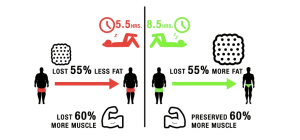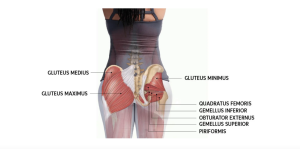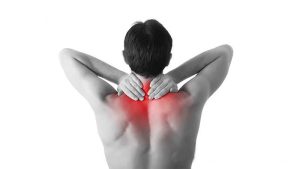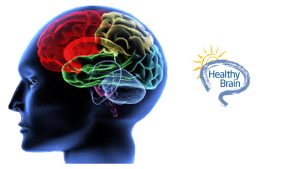Neck & Shoulder Pain
Neck & Shoulder pain can be classified in many different ways. Some people experience only neck pain or only shoulder pain, while others experience pain in both areas. Your neck and shoulders contain muscles, bones, nerves, arteries, veins as well as many ligaments and other supporting structures. Many conditions can cause neck & shoulder pain.
Neck pain
Most neck pain is due to strain and spasm of the neck muscles. Your neck is flexible and supports the weight of your head, therefore it is vulnerable to injuries and conditions that can cause pain, stiffness, and restrict motion. In many cases, it’s due to poor posture, poor sleeping habits, overuse or by injury, contact sports, or whiplash. Arthritis or injury to the neck can result in a pinched nerve. When this is the cause of the neck pain, the pain may extend down the shoulder and arm. To delve into the most common complaints related to the neck, check the menu below:
- Cervical radiculopathy
- Cervical disc herniation
- Non-specific neck pain
- Cervical spine arthritis
- Cervical spine osteoporosis
Most of the time, neck pain isn’t a serious condition and can be relieved within a few days with the help of specialised care, such as a chiropractor. In some cases, neck pain can indicate serious injury or illness. If you have neck pain that continues for more than a week, is severe, or is accompanied by other symptoms, (fever & headaches, nausea, or vomiting) seek specialised medical attention immediately.
Neck pain symptoms
Anyone with a neck sprain may go through an array of possible symptoms.
- Pain, especially in the back of the neck, that worsens with movement
- Pain that peaks a day or so after the injury, rather than immediately
- Muscle spasms and pain in the upper shoulder
- Headache in the back of the head
- Increased irritability, fatigue, trouble sleeping, and difficulty concentrating
- Numbness in the arm or hand
- Neck stiffness or decreased mobility (sideways, vertical, circular)
- Tingling or weakness in the arms
Shoulder pain
Shoulder pain is common and over time, the pain may become persistent and cause discomfort and disability. Most of the time the pain comes from the soft tissues near the joint and not from the bones or the joint itself. These soft tissues include the ligaments, tendons and bursae. Younger people are more likely to experience shoulder pain due to an accident or injury. However, as we get older, natural wear and tear occur in the shoulder joint and the rotator cuff tendon. All arm movements are dependent on a good, normal rhythmic movement between the shoulder blades, spine, clavicle, and shoulder. If shoulder mechanics do not work, this can result in neck, arms, back, and shoulder pain.
The position and support muscle of the shoulder blades play a particularly important role in all arm movements. Unilateral posture allows the arms to be held slightly out from the side of the body, with round, forward curved shoulders. In this position, lose scapula its muscular support, the small, stabilizing shoulder muscles are overloaded and it can get cramped for the tendons that go under the clavicle until the ball joint in the shoulder. Over time this can lead to inflammation and degenerative changes in tendons and joints. Shoulder pain can also come from wear and calcification, narrow channels of nerve, muscles and blood vessels, as well as shoulder capsule, may harden, also called frozen shoulder.
Bursitis is the inflammation of the bursa near the top of the shoulder. It can start with an uneasy feeling in the shoulder and may progress to considerable pain within 6-12 hours. There may be swelling at the tip of the shoulder. It is often seen in individuals who have been cutting hedges, painting the house, playing sports, and so on.
Types of Pain
Rotator cuff pain frequently occurs in both young athletes and middle-aged people. Young athletes using their arms overhead for swimming, baseball, and tennis are particularly vulnerable. Individuals who do repetitive lifting or overhead activities while using the arm, including paper hanging, construction, or painting are susceptible to injury as well. All these issues must be thoroughly examined by a chiropractor for the proper treatment can be implemented.
To delve into the most common complaints related to the shoulder, check the menu below:
Shoulder pain symptoms
You may experience shoulder pain and stiffness if you raise your arm or lower it from a heightened position. Early symptoms may include:
- Minor pain which is present both with activity and also at rest
- Pain radiating from the front of the shoulder to the side of the arm
- Sudden pain with lifting and reaching movements
- Swelling and tenderness
- Athletes in overhead sports often have pain when throwing or serving a tennis ball
As the problem progresses, the symptoms increase and may result in:
- Pain at night
- Loss of strength and motion
- Difficulty doing activities that position the arm behind your back, for instance, buttoning or zippering
Treatment for neck & shoulder pain
Early consultation can reduce late effects that often occur with neck & shoulder injuries. When you are not quickly improved, or you wonder if something is wrong with your neck or shoulder, a chiropractor can refer to the necessary X-ray, CT or MRI, or even refer to specialists if this proves necessary.
The conservative treatment applied at Chiro & Sports Med aims to restore the normal function of the locomotor and nervous system to decrease pain, promote overall health, and increase the quality of life. Treatment will be specifically tailored to each individual. At Chiro & Sports Med our chiropractors mainly use their hands in the processing and apply a variety of methods and techniques to restore normal function in the joints, muscles, and connective tissue, these include:
- Joint mobilisations and adjustments
- Soft tissue techniques
- Muscle stretches
- Acupuncture
- Heat therapy
- Interferential therapy
- Ultrasound therapy
- Exercise prescription, advice, and guidance
If you would like to make an appointment with one of the chiropractors at Chiro & Sports Med simply call our office on 9817 2005 and one of our friendly staff will organise an appointment for you.





